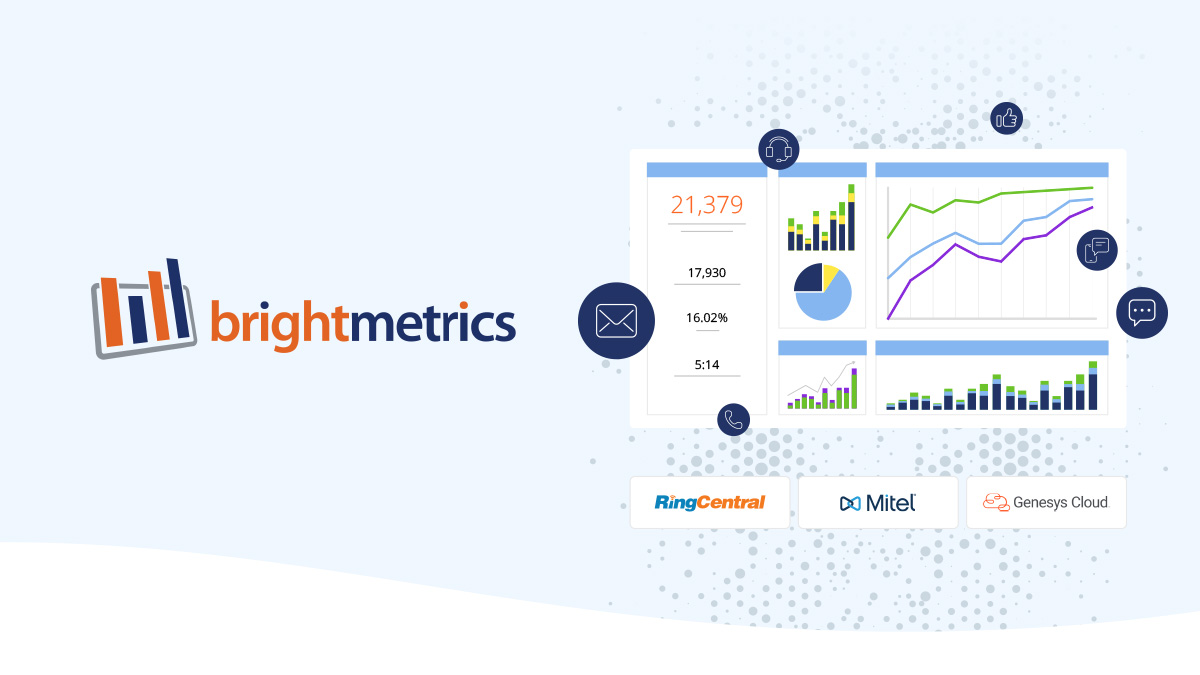Enhancing the caller experience and meeting performance objectives in the education sector may not involve upselling products or chasing sales targets like traditional customer-facing call centers. However, it remains crucial for your educational institution to ensure a seamless experience for inbound callers and achieve internal goals.
To attain these objectives effectively, call center leaders can rely on the power of innovative software to track relevant KPIs. The latest analytics platforms offer comprehensive insights through intuitive dashboards and data visualizations, far superior to basic reporting tools, empowering your organization with deeper knowledge.
Curious about which key metrics your team leads should focus on? Discover the essential metrics that call centers in the education industry should track below.
Peak Hour Traffic
Peak hour traffic (PHT) is a crucial metric that reveals the busiest call periods throughout the day. In the education industry, call centers at schools, colleges, and universities often experience a surge in calls during the early evening hours when students finish their classes or parents return from work. However, it’s essential to note that PHT can occur at any time during the day, making it one of the most significant call center KPIs to track.
By leveraging PHT data, you can effectively manage agent staffing levels during these peak periods. For instance, if most of your calls flood in between 6-7 p.m., you can proactively hire additional agents to handle the increased call volume and ensure more queries get addressed promptly. This proactive approach not only enhances the user experience but also projects your educational institution as professional and competent, leaving a positive impression on callers.
Transfer Rate
Transfer rate stands as another significant metric widely used by call center leaders in the education industry. This KPI measures the percentage of inbound calls that agents transfer to other team members or departments. Let’s say a student calls in with a question about student loans, and the inbound agent transfers the call to another agent with expertise in this area.
To calculate the transfer rate, you divide the number of transferred calls by the total number of calls received in a specific period (e.g., the last 30 days) and then multiply this by 100. Alternatively, you can make things easier by relying on call center analytics software, which can handle all the computations for you. By accessing metrics through intuitive dashboards, reports, and data visualizations, you can identify patterns and trends in transferred calls over different periods.
By tracking essential education call center metrics like transfer rates, you can gain valuable insights into agent performance. A high transfer rate, for instance, shows that inbound agents may struggle to resolve callers’ queries and find it necessary to hand off calls to others. This could signal the need to invest in training for inbound agents to improve their capabilities and ensure a smoother caller experience.

First Call Resolution
First call resolution (FCR) rates are among the essential call center KPIs that your team lead should keep an eye on. FCR measures the percentage of queries that get resolved during the initial interaction with your call center. When an agent successfully addresses a caller’s problem during the first contact, it means the caller doesn’t have to reach out again with the same issue. While FCR appears straightforward, it can be a more intricate metric to track because of possibilities like accidental call disconnections or callers returning for follow-up questions they forgot to ask during the first call.
A high FCR rate indicates that agents can frequently resolve issues right from the first call. This leads to higher caller satisfaction, as they won’t have to contact you repeatedly. A low FCR rate suggests that agents struggle to resolve issues on the first call, potentially necessitating additional training or resources. Alternatively, they might benefit from technologies that assist them in addressing caller problems more effectively. By closely monitoring FCR rates, your call center can continually improve its performance and enhance the overall caller experience.
Adherence
Schedule adherence, often referred to simply as adherence, is a critical metric that evaluates an agent’s compliance with their assigned tasks and schedule. For instance, if a call center manager sets a schedule for an agent, outlining that 90% of their time should be spent answering calls and 10% on updating customer profiles using a CRM system, the adherence metric will assess how well the agent adhered to this schedule.
In the education industry, adherence emerges as one of the most crucial KPIs, providing insights into agent performance within your call center. When an agent cannot adhere to their schedule, it may indicate struggles with their workload and suggest the need for additional training. Non-adherence to the schedule can hurt overall productivity. For instance, if an agent spends excessive time on administrative or computer tasks, it could lead to inadequate time spent on managing caller queries, ultimately affecting the customer experience.
Monitoring schedule adherence empowers your call center to identify areas of improvement, optimize agent performance, and ensure a seamless experience for your callers. By emphasizing adherence, your education call center can drive efficiency and enhance customer satisfaction.
Empowering Educational Call Centers With Analytics
The KPIs above can help call center managers measure performance and improve the caller experience. Brightmetrics lets your organization track vital metrics and more through powerful data visualizations, letting you uncover strategic insights about your contact center. Your teams can access high-level dashboards and call summary reports that reveal the latest call center intelligence, allowing them to make more informed decisions about day-to-day operations.
Learn more about improving your call center customer experience with Brightmetrics.




